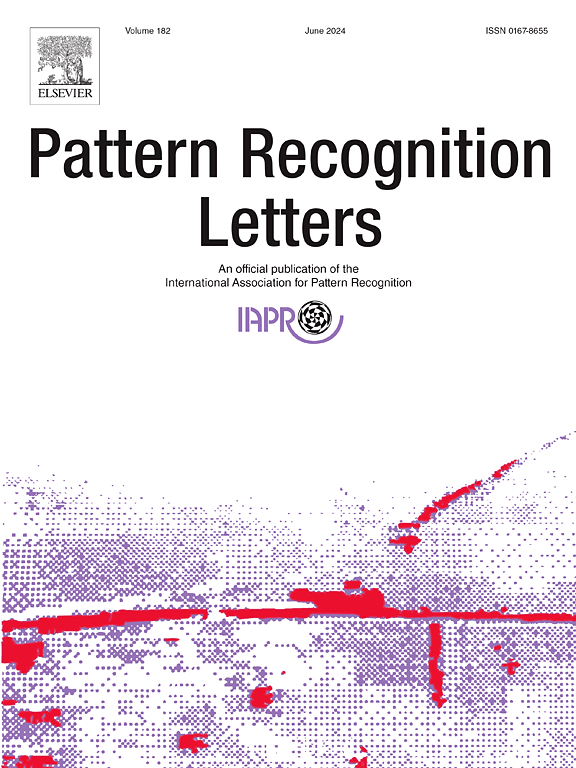Adaptive feature alignment for adversarial training
IF 3.9
3区 计算机科学
Q2 COMPUTER SCIENCE, ARTIFICIAL INTELLIGENCE
引用次数: 0
Abstract
Recent studies reveal that Convolutional Neural Networks (CNNs) are typically vulnerable to adversarial attacks. Many adversarial defense methods have been proposed to improve the robustness against adversarial samples. Moreover, these methods can only defend adversarial samples of a specific strength, reducing their flexibility against attacks of varying strengths. Moreover, these methods often enhance adversarial robustness at the expense of accuracy on clean samples. In this paper, we first observed that features of adversarial images change monotonically and smoothly w.r.t the rising of attacking strength. This intriguing observation suggests that features of adversarial images with various attacking strengths can be approximated by interpolating between the features of adversarial images with the strongest and weakest attacking strengths. Due to the monotonicity property, the interpolation weight can be easily learned by a neural network. Based on the observation, we proposed the adaptive feature alignment (AFA) that automatically align features to defense adversarial attacks of various attacking strengths. During training, our method learns the statistical information of adversarial samples with various attacking strengths using a dual batchnorm architecture. In this architecture, each batchnorm process handles samples of a specific attacking strength. During inference, our method automatically adjusts to varying attacking strengths by linearly interpolating the dual-BN features. Unlike previous methods that need to either retrain the model or manually tune hyper-parameters for a new attacking strength, our method can deal with arbitrary attacking strengths with a single model without introducing any hyper-parameter. Additionally, our method improves the model robustness against adversarial samples without incurring much loss of accuracy on clean images. Experiments on CIFAR-10, SVHN and tiny-ImageNet datasets demonstrate that our method outperforms the state-of-the-art under various attacking strengths and even improve accuracy on clean samples. Code will be made open available upon acceptance.
对抗训练的自适应特征对齐
最近的研究表明,卷积神经网络(CNN)通常很容易受到对抗性攻击。人们提出了许多对抗性防御方法,以提高对抗性样本的鲁棒性。而且,这些方法只能防御特定强度的对抗样本,从而降低了其应对不同强度攻击的灵活性。而且,这些方法往往以牺牲对干净样本的准确性为代价来增强对抗性鲁棒性。在本文中,我们首先观察到,随着攻击强度的上升,对抗图像的特征会发生单调而平滑的变化。这一有趣的观察结果表明,不同攻击强度的对抗图像的特征可以通过在攻击强度最强和攻击强度最弱的对抗图像的特征之间进行插值来近似。由于单调性特性,神经网络可以很容易地学习插值权重。基于这一观察结果,我们提出了自适应特征对齐(AFA)方法,它能自动对齐特征以防御不同攻击强度的对抗攻击。在训练过程中,我们的方法使用双批次规范架构来学习具有不同攻击强度的对抗样本的统计信息。在该架构中,每个批规范过程处理特定攻击强度的样本。在推理过程中,我们的方法通过线性插值双 BN 特征,自动适应不同的攻击强度。以往的方法需要针对新的攻击强度重新训练模型或手动调整超参数,而我们的方法与之不同,无需引入任何超参数,只需一个模型即可处理任意攻击强度。此外,我们的方法还提高了模型对敌对样本的鲁棒性,而不会对干净图像造成太大的精度损失。在 CIFAR-10、SVHN 和 tiny-ImageNet 数据集上的实验表明,在各种攻击强度下,我们的方法都优于最先进的方法,甚至提高了对干净样本的准确性。代码一经接受将公开发布。
本文章由计算机程序翻译,如有差异,请以英文原文为准。
求助全文
约1分钟内获得全文
求助全文
来源期刊

Pattern Recognition Letters
工程技术-计算机:人工智能
CiteScore
12.40
自引率
5.90%
发文量
287
审稿时长
9.1 months
期刊介绍:
Pattern Recognition Letters aims at rapid publication of concise articles of a broad interest in pattern recognition.
Subject areas include all the current fields of interest represented by the Technical Committees of the International Association of Pattern Recognition, and other developing themes involving learning and recognition.
 求助内容:
求助内容: 应助结果提醒方式:
应助结果提醒方式:


